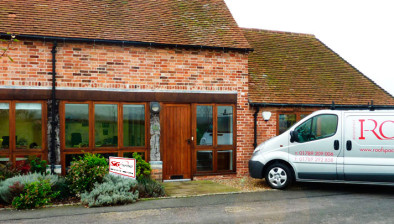Saint-Gobain in Scotland: Q&A with Stuart McKill
Saint-Gobain’s aim is to be the reference for sustainable habitat, providing a range of innovative and high-performance product solutions for all areas of the built environment. Stuart McKill, sustainable habitat leader in Scotland, talks to Scottish Construction Now about Saint-Gobain’s presence in Scotland and the challenges facing the construction industry.

Stuart McKillStuart has 40 years’ experience in the Construction Products industry, and in his current role, Stuart works to accelerate Saint-Gobain’s Habitat Strategy in support of brands in Scotland.
Tell us about Saint-Gobain’s operations in Scotland.
Saint-Gobain has a strong presence in Scotland, built up over many years. We currently have 22 brands operating in the country, including Jewson, Graham The Plumbers’ Merchant, British Gypsum and Celotex, providing high-performance solutions and innovative materials to the Scottish market.
We employ 1,455 people across 113 sites, and are committed to giving back to the economy through our operations, whilst minimising our environmental impact.
We have been involved in some of Scotland’s most iconic projects, with our product solutions specified at The Kelpies, the Falkirk Wheel and the Glasgow Transport museum, helping to create lasting legacies in Scotland.
What are the challenges facing the construction industry?
It’s vital that the current housing shortage is not ignored. In Scotland alone, 23,000 homes must be created by the end of 2016 to meet demand, but it’s important that these houses deliver a comfortable, energy efficient environment for homeowners and tenants.
We also need to make sure that the construction industry can keep up with demand, yet this is getting trickier as businesses struggle to employ workers with the right skills.
With nearly half of 16-24 year olds unemployed across the UK, it’s clear that more needs to be done to support young people, giving them the skills they need to succeed in the workplace. It’s also important to raise awareness of the diverse and rewarding careers available in the construction industry.
Two of our brands, Jewson and George Boyd, have been working with Street League Scotland, a charity that uses football to tackle this problem – (no pun intended!). Those who attend learn key employability skills, including communication and teamwork, and have the opportunity to achieve nationally recognised qualifications. They also learn to build their CVs and undergo mock interviews – as well as playing football!
We will continue to provide training to these young people throughout the 12-month partnership with Street League, helping them to build the skills they need to succeed in the construction industry. It is schemes like this that will make sure that the sector remains vibrant for future generations.
At the beginning of 2015, we donated over £99,000 to help renovate the new Prince’s Trust hub in Glasgow, as well as providing materials from brands including Jewson, Graham The Plumbers’ Merchant, British Gypsum and Celotex. The hub opened at the end of 2015, but we will continue to offer training and support to those the Trust helps.
You mentioned that new homes must deliver a ‘comfortable, energy efficient environment’. Do you think Building Regulations go far enough in providing healthy, comfortable and sustainable buildings?
The industry is moving in the right direction when it comes to energy efficiency and carbon reduction, but this should not be seen as a ‘one size fits all’ solution. Homeowners may feel financial benefit from installing insulation and cutting energy bills, but more needs to be done to make a home truly comfortable.
It’s important to take a holistic approach to building and carefully consider all the different areas of comfort that a building should provide. Saint-Gobain has developed a concept that develops five primary comfort levels: thermal comfort, visual comfort, audio comfort, indoor air comfort and economic comfort, which are all interlinked. If one aspect is ignored, then user comfort can be significantly reduced.
In order to achieve ‘healthy’ buildings, we need to look further and evaluate buildings beyond energy use, and create whole systems that take into account each individual element contributing to comfort.





















